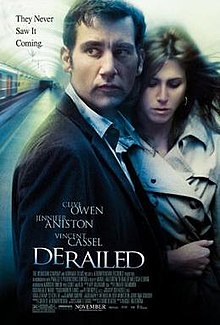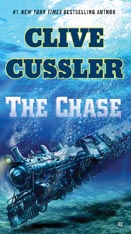The financial crash of 2008 was a failure of professional integrity, political courage, and government policy. That is the takeaway message I received after reading Reckles$ Endangerment, a non-fiction work by Gretchen Morgenson, a Pulitzer Prize-winning business columnist for the New York Times, and Joshua Rosner, a financial adviser on housing and mortgage issues. Before reading the book, I had heard it said that anyone who read it “would never vote Democrat again.” Now I know why that is said.

The inciting incident that set into motion the 2008 calamity begain in 1994, when President Bill Clinton launched the National Partners in Homeownership program (referenced here as the Initiative), which sought to increase home ownership in America through a partnership among home builders, banks, realtors, Wall Street firms, and dozens of housing interest groups around the nation. Those targeted by the Initiative were primarily the poor, who would supposedly benefit by lower construction costs by builders and “creative financing” offered by lenders.
Ultimately, the push for creative financing had a corrosive effect on the mortgage industry as a whole. Many lenders viewed Clinton’s Initiative as permission to lower lending standards to reckless levels, and saw an opportunity to become wealthy along the way by significantly increasing the volume of mortgages pumped through their firms.
James Johnson was one of those who saw an opportunity for amassing wealth via the Initiative. He gained experience with the workings of Washington as an advisor to Vice President Walter Mondale and other prominent Democrats. He was appointed to an executive position at Fannie Mae in 1990, and soon became its chairman. Seizing upon the Initiative, he refocued Fannie Mae to lower lending standards while at the same time increasing profits to justify huge executive bonuses.
Fannie Mae is a quasi-government corporation that buys mortgages from lenders and repackages them into an investment instrument called a Mortgage-Backed Security. As the largest firm doing this, Fannie Mae historically set lending standards for the industry. These securities pay interest and are backed by the taxpayer. Banks, brokerages, pension funds, and others made large purchases of these securities as other fixed-income interest rates fell in the late 1990s and early 2000s. With the arrival of James Johnson as chairman, the book describes how Fannie’s lending standards were reduced, using Clinton’s Initiative as the excuse. That action rippled through the mortgage industry, creating a culture of recklessness that resulted in completely unqualified home buyers obtaining loans they could never pay.
Seeing the profits flow into Fannie Mae, Wall Street firms jumped into the Mortgage-Backed Securities business with a seemingly insatiable appetite for buying loans to repackage and sell. In their case, however, taxpayer guarantees were not available, so they turned to AIG (American International Group), a giant insurance company, who sold to these Wall Street firms something called a Credit Default Swap for mortgages - an instrument that was neither an insurance policy nor an investment - that would supposedly pay if the loan went into default. In any case, AIG kept few cash reserves on hand to pay out claims. After all, real estate was not considered a risk. In fact, the prominent credit ratings firms considered Mortgage-Backed Securities so safe they received a better than AAA rating - the best of the best.
Of course, the politicians don’t escape blame in this saga. Chief among them - but hardly alone - was Congressman Barney Frank (MA) who served as the ranking Democrat on the house Banking Committee. He, along with most other Democrats and a few Republicans, were staunch defenders of Fannie Mae’s risky lending practices, partly to support Clinton’s Initiative, but also due to Johnson’s skillful lobbying efforts. All attempts by regulators and the Bush Administration to sound the alarm were rebuffed. Interestingly, the Republicans, and especially the much-maligned President Bush, are mentioned very little in the book; the disastrous policies that led to the Initiative - and those who supported it politically - were mostly Democrats.
Reckles$ Endangerment goes on to detail the various shady operators that infested the mortgage industry as the Initiative firmly took root. It also names politicians who repeatedly issued denials that a financial crisis was building as the housing bubble grew. The Federal Reserve’s role is also examined, where they kept interest rates excessively low in the wake of the post-9/11 recession, even after economic recovery had occurred. Morgenson and Rosner’s writing style makes the book a compelling read, and the financial jargon is not too heavy that it can’t be digested. Anyone who wants to know the real facts of how all that Wall Street greed came about should definitely read this book.
 The postmark gave a small clue: October 31, 1962 - Halloween. What in the world had I sent my grandmother for Halloween?
The postmark gave a small clue: October 31, 1962 - Halloween. What in the world had I sent my grandmother for Halloween? Really great mystery/thrillers fool the reader into thinking they know what's coming next. The protagonist starts out as an innocent Joe who is sucked into violent or dangerous circumstances beyond anything he's encountered before. As the story progresses his life is thrown into turmoil. But little by little, he becomes hardened and more savvy. He learns to fight back. And there's a plot twist.
Really great mystery/thrillers fool the reader into thinking they know what's coming next. The protagonist starts out as an innocent Joe who is sucked into violent or dangerous circumstances beyond anything he's encountered before. As the story progresses his life is thrown into turmoil. But little by little, he becomes hardened and more savvy. He learns to fight back. And there's a plot twist.